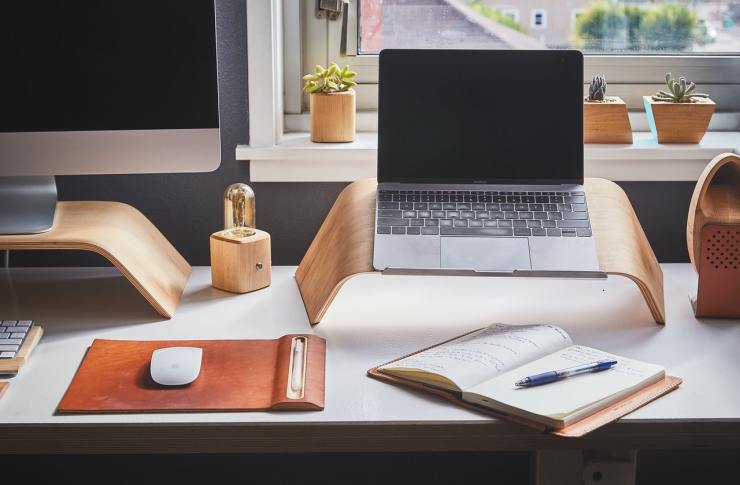Device placement tips to reduce neck and eye strain
Thoughtful device placement can ease neck and eye strain during long home office sessions. Small changes—adjusting monitor height, rearranging frequently used items, managing cables, and improving lighting—support neutral posture and clearer vision. This short overview outlines practical steps to optimize your workspace for daily comfort.

Careful device placement is a practical way to reduce neck and eye strain without expensive equipment. Positioning screens, keyboards, and reference materials so they encourage a neutral spine and relaxed gaze lowers the risk of repetitive tension. Combine placement adjustments with short breaks, simple posture checks, and environment tweaks to create a workspace that supports sustained focus and physical comfort.
This article is for informational purposes only and should not be considered medical advice. Please consult a qualified healthcare professional for personalized guidance and treatment.
How do ergonomics and posture guide placement?
Ergonomics and posture are the foundation for device placement. Aim to keep the head aligned over the shoulders and the spine neutral; this prevents forward head posture that increases neck load. Sit so your elbows rest near a 90–110 degree angle and your wrists remain straight while typing. Use seat height adjustments, lumbar support, and an external keyboard if a laptop forces awkward angles. Good ergonomics means arranging devices to fit your body, not forcing your body to fit the devices, which minimizes strain during long work intervals.
What are monitor placement, height, and lighting best practices?
Optimal monitor placement keeps the top third of the screen close to eye level and the screen roughly an arm’s length away to reduce eye convergence and neck lean. Tilt the display slightly to avoid reflections, and use a monitor arm for easy repositioning. Balance ambient lighting with a task lamp to avoid high-contrast scenes between screen and surroundings. Reduce glare from windows using blinds or repositioned screens. When possible, alternate focus between near and distant objects every 20–30 minutes to ease eye muscles.
How can decluttering, cable management, and storage reduce strain?
Decluttering your desktop clarifies visual fields and reduces the need to reach or twist frequently, protecting the neck and upper back. Effective cable management keeps cords tucked away so you can move peripherals without snagging or overreaching. Use vertical shelves or under-desk drawers to store reference materials near eye level when needed, rather than on the floor or across the room. Keep frequently used items within an easy radius to cut down on repetitive, awkward motions that accumulate into discomfort.
How do zoning, workflows, and scheduling support healthier postures?
Zoning the workspace into distinct areas for focused screen work, non-screen tasks, and brief movement breaks encourages posture variety. Design workflows so tasks that demand different postures are grouped—reading at a slightly higher surface, typing at a seated desk, and a standing zone for short reviews or stretches. Use scheduling to alternate focused blocks with short standing or mobility breaks every 30–60 minutes. These rhythms let you reset posture and give eyes a chance to refocus to longer distances, reducing fatigue.
Why do acoustics and ventilation matter for comfort?
Acoustics and ventilation influence comfort indirectly but meaningfully. Excess noise increases tension and can cause you to lean forward or clench, which intensifies neck strain. Soft furnishings or acoustic panels help maintain calm focus and steadier posture. Good ventilation reduces dryness and fatigue that contribute to eye irritation; if fresh air is limited, a quiet air circulator or an unobtrusive humidifier can help. Creating an environment that supports concentration lowers the tendency to adopt strain-inducing positions.
Can biophilia, plants, and connectivity improve well-being and placement?
Integrating biophilia and plants offers gentle visual variety, giving eyes a nearby, non-screen focal point that encourages natural refocusing; place plants slightly off to the side or behind the main screen so they don’t block sightlines. Ensure connectivity is reliable and that device hubs are organized so you don’t repeatedly reach or reposition equipment to reconnect. Consistent placement of chargers, hubs, and peripherals reduces unnecessary movement and helps maintain an ergonomic setup over time.
Practical, product-neutral adjustments often deliver the most immediate benefit: raise laptops with a stand and use an external keyboard, align document holders with your main screen, and choose adjustable lighting to minimize glare. Regularly reassess placement as tasks and workflows change; small, iterative tweaks help sustain posture and visual comfort across varied workdays.
In summary, reducing neck and eye strain relies on placing devices to support neutral posture, optimizing lighting and acoustics, managing clutter and cables, and designing workflows and zones that encourage movement. Together these strategies create a home office that protects both posture and vision over the long term.





